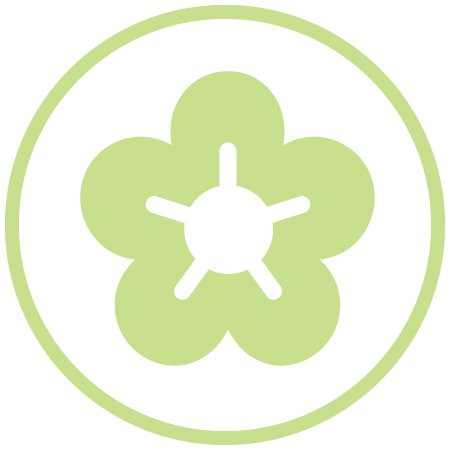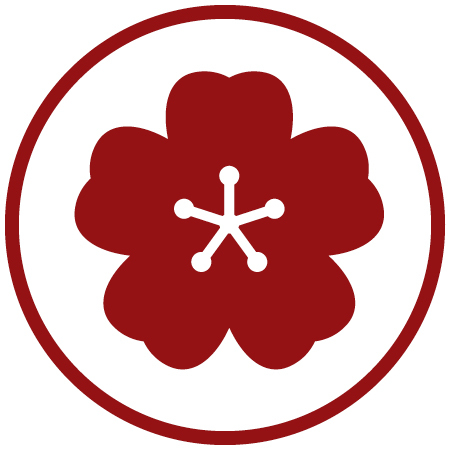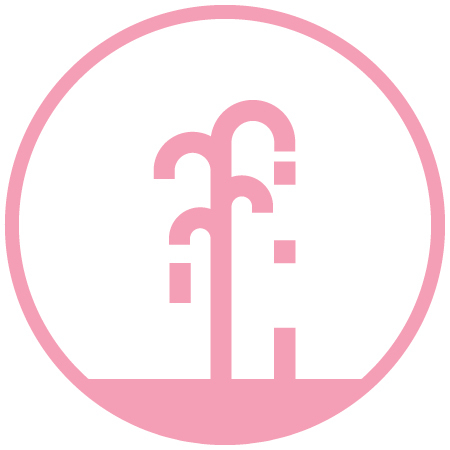Celebrate Spring with This Self-Guided Tour of the Conservatory Garden

Take a breath of fresh air, relax, and enjoy your self-guided Conservatory Garden tour.
Thank you for generously supporting the Central Park Conservancy, and welcome to the Conservatory Garden! During your refreshing spring stroll, use this guide to navigate the Garden’s three distinct sections: the French-style North Garden, Italianate Center Garden, and the English-style South Garden.
Best Practice
In adherence with State and NYC Parks' protocol, all guests are required to wear a mask. Maintain a personal distance of six feet or more from others. Timed entry is to encourage social distancing; please arrive on time for your confirmed slot.
Tour Stops

Vanderbilt Gate

The ornate, wrought-iron Vanderbilt Gate is a fitting entry to Central Park’s only formal garden, welcoming visitors to the calm interior of the Conservatory Garden as they leave behind the chaos of the city streets. Tall and imposing yet exceedingly delicate, the gate is considered one of the finest examples of wrought-iron work in New York City. Designed by American architect George B. Post, the Vanderbilt Gate was made in Paris in 1894 and once stood at the mansion of Cornelius Vanderbilt II, then located at Fifth Avenue and 58th Street. Gertrude Vanderbilt Whitney, founder of the Whitney Museum of American Art, gifted the gates to the City in 1939, 11 years after the mansion was demolished. The gates open to allow visitors access to the Garden at 8:00 am and close at dusk.

Crabapple Allées (North)

Flanking the Italian Garden is an exquisite allée showcasing rows of crabapple trees that bloom every spring, forming one of the most spectacular sights in all of Central Park’s 843 acres. The trees’ winding branches provide a cool archway in the summer heat, and are equally alluring in winter with a light dusting of snow. Depending on the weather, the trees may bear remnants of the blooms throughout the seasons. Any time of the year, birds can be heard singing in the allées. Take a moment to sit down on one of the benches, designed for the New York World’s Fair of 1939, and listen to the chorus of birdsong.

French-Style North Garden

To your left and right are beds that contain key shrubs, including salmon-flowering Japanese quince, white-flowering spirea, and two ever-blooming roses: 'Carefree Wonder' with pink flowers and 'Seafoam' with white. At the end of the four paths leading to the Garden’s center are four rose arbors covered with 'Silver Moon,' a very old climbing rose that puts out luminous white flowers every June. The flat interior beds are designed as a French “parterre”—literally a design “on the ground.” The second level of beds— the larger, sloping beds that encircle the parterre— present two dazzling floral displays each year: 20,000 bulbs in the spring and 2,000 Korean chrysanthemums in the fall. When the bulbs have finished blooming in mid-May, the chrysanthemums are put in their place to mature over the summer

Untermeyer Fountain (Three Dancing Maidens)

Created by the German sculptor Walter Schott circa 1910, the fountain was placed in the Garden in the late 1940s, almost a decade after it opened to the public in 1937. This bronze fountain is among the most graceful pieces in the Park. Admire the details and how Schott captures both the movement and emotions of the three dancing maidens.

Wisteria Pergola

As you walk up the stone steps in the Italianate Center Garden, you will discover a curved pergola made of wrought iron and lined with benches that offer beautiful views of Fifth Avenue. The wisteria here is more than 50 years old and perfumes the air as it bursts into gorgeous purple bloom. Note the contrast of the pergola’s delicate ironwork and the thick, twisted stems of the plant. The wisteria also serves as a home to many birds as well as raccoons. Although it’s commonly believed that raccoons are only active at night, it’s completely normal for perfectly healthy raccoons to be out and about at all hours. If you do spot a raccoon in the daylight, they should not be considered dangerous or assumed to carry rabies. Just keep a respectful distance and continue on your way.

Thirteen Colonies

If you look out over the semicircular tiers of yew and spirea, you’ll get a breathtaking view of the Italianate Center Garden and its half-acre rectangle of green lawn ringed with yew hedges. But don’t forget about the surprise just under your feet! As you walk the length of the pergola, notice the stone walkway that includes medallions inscribed with the names of the 13 original states commemorated in the bluestone floor, with New York in the center

Conservatory Garden Center Fountain

The heart of the Italianate Garden, this elegant geyser fountain stands at the western edge of the center lawn. In spring, the fountain is a particularly romantic sight with the wisteria pergola blooming in the background. Its design echoes the classical Italian style that characterizes this part of the Garden. The single 12-foot jet fountain fits the expanse, the simplicity, and the grandeur of the elegant and spacious Central Garden.

Crabapple Allées (South)

On the south side of the Italianate Garden stands another exquisite allée of crabapple trees that bloom in the spring and produce millions of tiny crabapples in the late summer. Walk down the south allée and enjoy the peace and tranquility that these 65-year-old crabapple trees provide. Then, head toward the eastern end and take the staircase that will lead you into the English-style South Garden.

English-Style South Garden

The South Garden’s ten large beds form a horseshoe. Surrounding them are lilacs whose purple and white flowers perfume the air in spring. Five large beds contain about 175 different kinds of perennials and ornamental woody plants. The inner beds are seasonal, which will soon be planted with over 150 varieties of summer-blooming annuals. Although the Garden is famous for its incredible blooms, its beauty goes beyond its colorful flowers. To quote the curator of the Conservatory Garden, Diane Schaub: “A garden is never finished, as it is constantly changing. It involves color, shape, texture, light, shadows, water—it is a living work of art!”

What is English-Style?

The South Garden’s perennial beds have been planted to have year-round interest, and the flowers are actually of secondary importance to the overall composition. Look at the textures of the leaves, and the plants’ shapes. Notice the many different greens and grays, spiky plants next to soft, massive next to delicate, sleek next to furry. You’ll notice that the atmosphere of the South Garden is quite different than the others. The impression of the naturalness and abandon is deliberate, and the plants are encouraged to spill over the boundaries and onto the flagstone paths. The Conservatory Garden has a dedicated team of just six staff members and 20 volunteers who carefully tend to this space.

Burnett Fountain

The bronze statue in the reflecting pool is of two children, Mary and Dickon from The Secret Garden, the classic children’s novel by Frances Hodgson Burnett. The statue, dedicated to Burnett, was designed by Bessie Potter Vonnoh and is original to the Garden. Many people call this the “Secret Garden” because of the statue and the enclosed, intimate atmosphere. The area around the pool of the fountain was specifically designed for reading and storytelling. In the pool, tropical water lilies bloom throughout the summer. Come back to the “Secret Garden” often, for it changes as it matures throughout the seasons and the years.

Woodland Slope

In the early spring, delicate daffodils and other flowers cover the area, along with woodland plants. The slope has more than 100 kinds of perennials and ferns, plus dozens of trees and shrubs that provide year-round interest. Native American species are combined with European and Asian plants to create a mostly shady garden. Continue walking around the Woodland Slope and admire the Garden’s architecture and tranquility.
